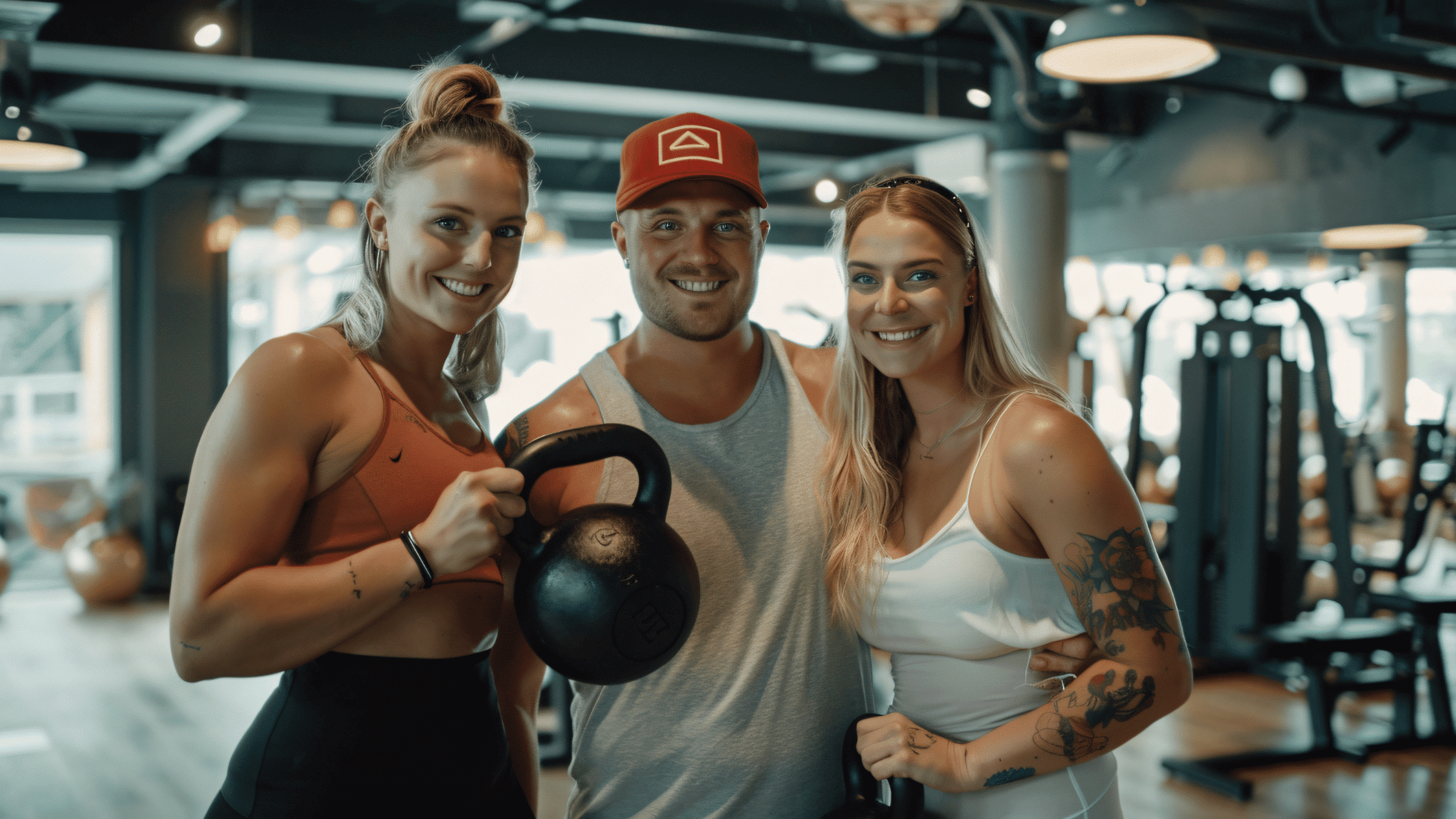Are you tired of spending hours at the gym without seeing the results you want? It’s time to rethink how you approach your workouts. This blog post will show you how to make the most out of your time at the gym by focusing on workout efficiency. Whether you’re a fitness enthusiast, health-conscious individual, or a regular gym-goer, these practical tips and techniques will help you achieve your fitness goals faster and more effectively.
The Importance of Efficient Workouts
Efficient workouts are crucial for anyone looking to make the most of their time. By focusing on workout efficiency, you can achieve your goals faster, reduce the risk of injury, and maintain your motivation. Efficient workouts also allow you to balance fitness with other aspects of your life, ensuring you stay committed to your health without feeling overwhelmed.
Benefits of Knowing How to Maximize Your Workout
Maximizing workout efficiency comes with numerous benefits. Firstly, it saves time, allowing you to fit exercise into a busy schedule. Secondly, efficient workouts are often more intense, leading to quicker strength, endurance, and overall fitness improvements. Lastly, by optimizing your workouts, you can reduce the risk of overtraining and burnout, keeping your fitness journey enjoyable and sustainable.
Plan Your Workouts in Advance
One of the most effective ways to maximize workout efficiency is by planning your workouts in advance. Having a clear plan helps you stay focused and ensures you’re targeting all the necessary muscle groups.
Benefits of Having a Workout Plan
A well-structured workout plan provides a roadmap for your fitness journey, helping you stay consistent and motivated. It also ensures that you balance different types of exercises, from strength training to cardio, which is essential for overall fitness. Additionally, a workout plan allows you to track your progress and adjust as needed.
Tips for Creating an Effective Workout Schedule
When creating your workout plan, consider your fitness goals, available time, and current fitness level. Start by scheduling three to five workouts per week, including a mix of strength training, cardio, and flexibility exercises. Also, make sure to incorporate rest days to allow your body to recover and prevent overtraining.
Warm Up Properly
Warming up before your workout is crucial for preventing injuries and preparing your body for exercise. A proper warm-up increases blood flow to your muscles improves flexibility and enhances overall performance.
Importance of Warming Up to Prevent Injuries
Skipping your warm-up can lead to muscle strains, sprains, and other injuries. A good warm-up prepares your muscles and joints for the demands of your workout, reducing the risk of injury and improving your overall workout quality.
Examples of Effective Warm-Up Exercises
An effective warm-up should last about 5-10 minutes and include dynamic stretches like leg swings, arm circles, and hip rotations. You can also include activities like jogging or jumping jacks to raise your heart rate and get your blood flowing.
Focus on Compound Movements
Compound movements are exercises that work multiple muscle groups simultaneously, making them highly efficient for building strength and burning calories.
What are Compound Movements, and What are Their Benefits?
Unlike isolation exercises that target a single muscle group, compound movements engage several muscles at once, leading to more efficient workouts. These exercises also improve functional strength, enhance coordination, and burn more calories, making them ideal for anyone looking to maximize their workout efficiency.
Examples of Compound Exercises
Some popular compound exercises include squats, deadlifts, and bench presses. These exercises target multiple muscle groups, such as the legs, back, and chest, providing a full-body workout in less time.
Use Proper Form and Technique
Proper form and technique during workouts are essential for preventing injuries and maximizing the effectiveness of each exercise.
Why It’s Important to Maintain Proper Form
Poor form can lead to injuries and reduce the effectiveness of your workouts. Maintaining proper form ensures that you’re targeting the intended muscle groups and getting the most out of each exercise.
Tips for Ensuring Correct Technique
To maintain proper form, start with a manageable weight and focus on controlled movements. Consider working with a trainer or using mirrors to check your form. Additionally, pay attention to your body’s signals and avoid pushing through pain.
Incorporate High-Intensity Interval Training (HIIT)
High-Intensity Interval Training (HIIT) is a workout method that alternates between short bursts of intense activity and periods of rest or low-intensity exercise. HIIT is highly effective for burning calories and improving cardiovascular fitness.
Benefits of HIIT for Maximizing Workout Efficiency
HIIT workouts are time-efficient, often lasting only 20-30 minutes, yet provide significant benefits. These workouts boost your metabolism, enhance fat loss, and improve cardiovascular health, making them ideal for busy individuals looking to maximize their workout efficiency.
Example of a Simple HIIT Routine
A simple HIIT routine might include 30 seconds of sprinting followed by 30 seconds of walking, repeated for 20 minutes. For a full-body HIIT workout, you can also incorporate bodyweight exercises like burpees, jump squats, and push-ups.
Limit Rest Periods
Managing your rest periods effectively can significantly impact the intensity and efficiency of your workouts. Shorter rest periods elevate your heart rate, increasing calorie burn and improving cardiovascular fitness.
The Impact of Rest Periods
Long rest periods can reduce the intensity of your workout and make it less effective. Limiting rest periods, you maintain a higher level of intensity, leading to better results in less time.
Tips for Managing Rest Periods
Aim to keep rest periods between sets to 30-60 seconds for most exercises. Use a timer or stopwatch to ensure you stick to your planned rest intervals. Additionally, consider incorporating active rest, such as light jogging or stretching, to keep your body moving.
Stay Hydrated During Your Workout
Staying hydrated is crucial for maintaining performance and preventing dehydration during your workouts. Water helps regulate body temperature, lubricate joints, and transport nutrients to your muscles.
Importance of Hydration for Performance
Dehydration can lead to fatigue, dizziness, and reduced performance. By staying hydrated, you ensure that your body functions optimally, allowing you to perform at your best during your workouts.
Tips for Staying Hydrated Before, During, and After Workouts
Drink water throughout the day, aiming for at least 8-10 cups. Before your workout, have a glass of water to start hydrated. During your workout, take small sips of water regularly. After your workout, replenish lost fluids by drinking water or a sports drink.
Cool Down and Stretch
Cooling down and stretching after your workout is essential for reducing muscle soreness and promoting recovery. A proper cool-down helps gradually lower your heart rate and relax your muscles.
Benefits of Cooling Down and Stretching
Skipping your cool-down can lead to muscle stiffness and soreness. Stretching helps improve flexibility and circulation, aiding muscle recovery and reducing the risk of injury.
Examples of Effective Cool-Down Exercises and Stretches
Spend 5-10 minutes cooling down with light aerobic exercises like walking or cycling. Follow this with static stretches, such as hamstring stretches, quad stretches, and shoulder stretches, holding each stretch for 20-30 seconds.
Track Your Progress
Monitoring your progress is crucial for staying motivated and ensuring you’re on track to achieve your fitness goals. Keeping track of your workouts helps you identify areas for improvement and celebrate your successes.
Importance of Monitoring Progress
Tracking your progress provides valuable feedback on your performance and helps you stay accountable. It also allows you to adjust your workout plan as needed, ensuring continued progress toward your goals.
Tips for Tracking Workouts and Measuring Improvements
Use a fitness journal or app to record your workouts, including the exercises performed, weights used, and repetitions completed. Regularly review your progress and set new goals to keep challenging yourself.
Seek Feedback and Adjust
Seeking feedback from trainers or workout partners can provide valuable insights into your performance and help you make necessary adjustments to your routine.
Feedback = Progress
Feedback helps you identify areas for improvement and refine your technique. It also provides motivation and encouragement, helping you stay committed to your fitness goals.
Tips for Adjusting Your Routine Based on Feedback and Results
Regularly ask for feedback from trusted sources, such as trainers or experienced workout partners. Use this feedback to make informed adjustments to your workout plan, ensuring continued progress and avoiding plateaus.
How to Maximize Your Workouts for Optimal Results
Maximizing workout efficiency is all about making smart choices and being intentional with your efforts. By planning your workouts, focusing on compound movements, using proper form, incorporating HIIT, managing rest periods, staying hydrated, cooling down, tracking progress, and seeking feedback, you can achieve your fitness goals faster and more effectively.
Remember, the key to success is consistency and dedication. Apply these tips and techniques to your fitness routine, and watch as you transform your workouts and achieve the results you’ve always wanted.
Ready to take your fitness journey to the next level? Start implementing these strategies today and experience the benefits of efficient workouts. If you need further guidance, consider reaching out to a fitness professional or joining a community of like-minded individuals who can support and motivate you along the way.



